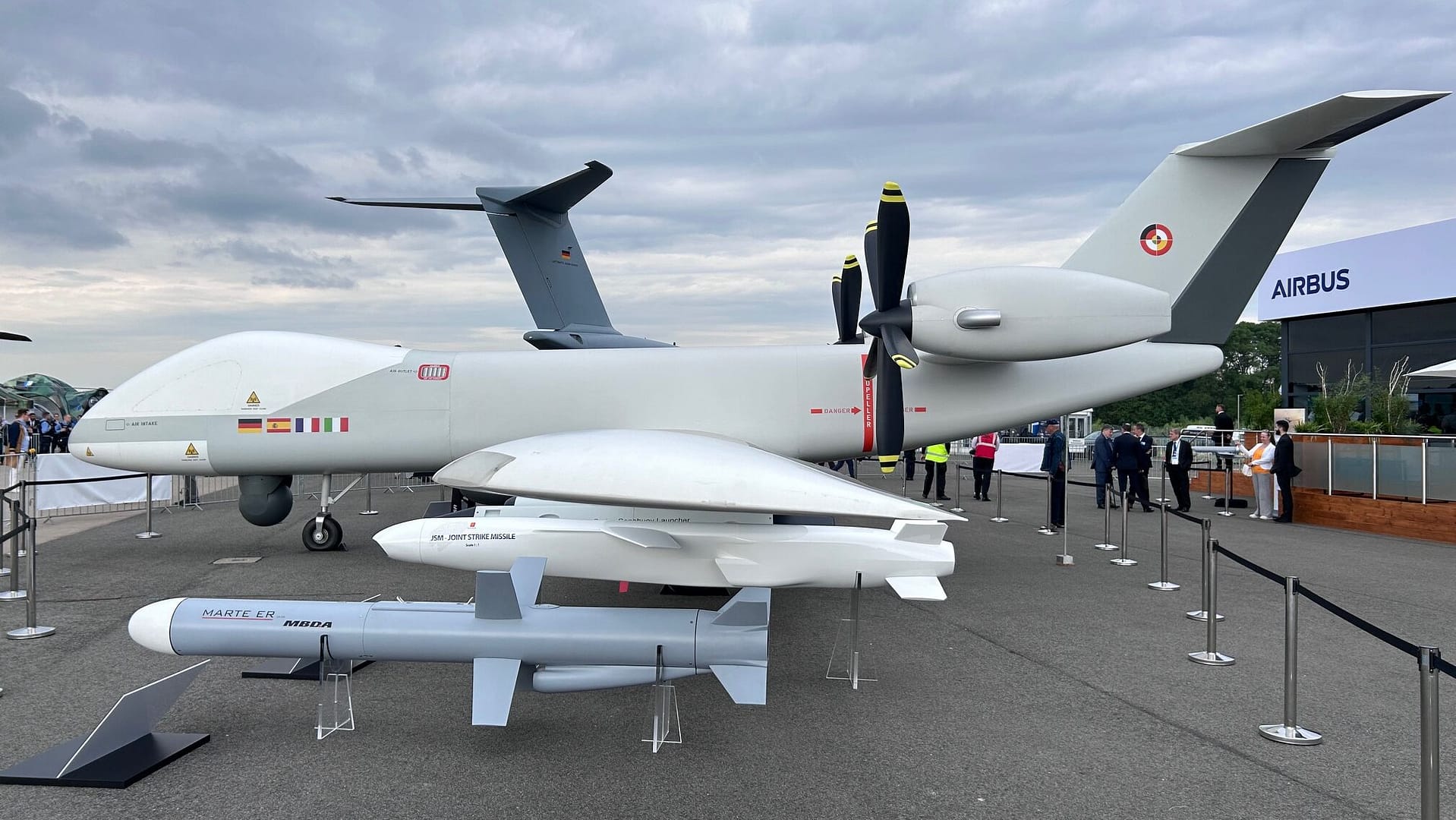India has recently joined the Eurodrone program as an observer nation. This inclusion marks India as the second Asia-Pacific country to gain such status, following Japan.
About Eurodrone programme
The Eurodrone programme is a 4-nation initiative involving France, Germany, Spain and Italy.
Managed by the Bonn-based OCCAR (Organisation for Joint Armament Cooperation)
It is led by Airbus Defence and Space (Germany), with key partners including Leonardo (Italy), Dassault Aviation (France), and Airbus (Spain) as major subcontractors.
What is the Eurodrone?
A Medium Altitude Long Endurance (MALE) remotely piloted aircraft system (RPAS) designed for long-endurance missions like intelligence, surveillance, reconnaissance, maritime surveillance, anti-submarine warfare, and early warning.
The project, valued at approximately €7 billion, involves collaboration among France, Germany, Italy, and Spain.
It can stay airborne for up to 40 hours and carry a payload of 2.3 tonnes.
Key Features:
Twin-engine design enables operations in severe weather.
First RPAS designed for safe and reliable flight in shared airspace.
Ensures secure and exclusive data management through controlled connectivity.
Timeline:
Launched in 2022 as “European Programme for European Sovereignty”
Passed preliminary design review (PDR) in 2024.
First flight scheduled for 2026, with deliveries by 2028.
Full operational deployment expected by 2030.
Observer Nation Status
As an observer nation, India will have access to technical data and the option to place orders for the Eurodrone.
However, it will not participate in decision-making processes regarding the design, development, or workshare distribution among the primary participating countries.
India’s application for observer status was submitted in August 2024, following Japan’s admission in November 2023.
Strategic Importance
Eurodrone strengthens European defence independence, reducing reliance on US (Reaper) and Israeli (Heron) drones.
Part of Europe’s collective defence strategy.
€7.1 billion programme includes 20 systems (each with 3 UAVs and 2 ground stations).
Strategic Defence Collaboration
India’s entry into the Eurodrone program aligns with its broader defence strategy to enhance technology collaboration with global partners.
This move follows a defence cooperation agreement with Germany, signed in October 2024, which outlines commitments to technology collaboration, co-production, and co-development of defence platforms.
Challenges in Indian Air Force Modernisation
The Indian Air Force (IAF) faces challenges in modernising its fleet. Currently, it operates only 31 squadrons, well below the sanctioned strength of 42. Delays in the production of new fighter jets and setbacks in the indigenous Advanced Medium Combat Aircraft (AMCA) program further complicate the situation.
Regional Security Concerns
India’s regional adversaries, particularly China, have made considerable advancements in military aviation. The Chinese J-20 stealth fighter and the recent unveiling of the J-35A pose challenges for India’s air power. Additionally, Pakistan is reportedly acquiring the J-35A, further intensifying competition in the region.
Options for Fifth-Generation Fighters
India is exploring various options for acquiring fifth-generation fighter jets, including the US F-35 Lightning II, Russian Su-57, and indigenous AMCA. However, complications arise due to geopolitical factors, such as India’s operation of the Russian S-400 air defence system, which could hinder F-35 acquisition.
Future Prospects in Sixth-Generation Aircraft Development
India’s involvement in the Eurodrone program may pave the way for participation in European sixth-generation fighter jet initiatives, like the Global Combat Air Programme (GCAP) and the Future Combat Air System (FCAS). These projects aim to develop advanced capabilities, including artificial intelligence and enhanced stealth features.
Collaborative Defence Development Considerations
As India evaluates its options for fifth-generation aircraft, it must also consider investing in sixth-generation technologies. Collaboration with European partners may provide a viable path forward. However, these decisions involve careful consideration of cost-sharing and risk factors associated with joint development initiatives.

Leave a Reply